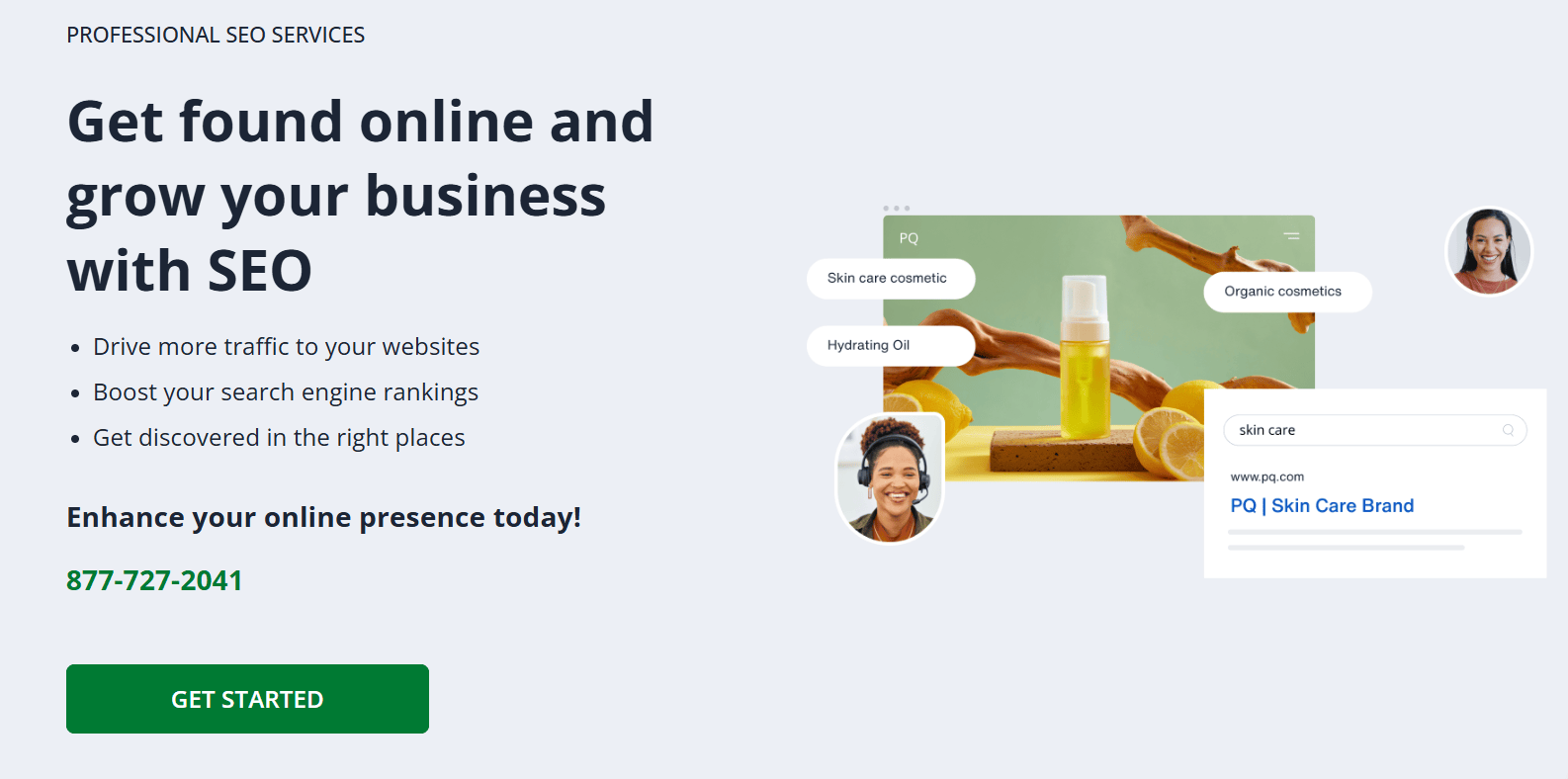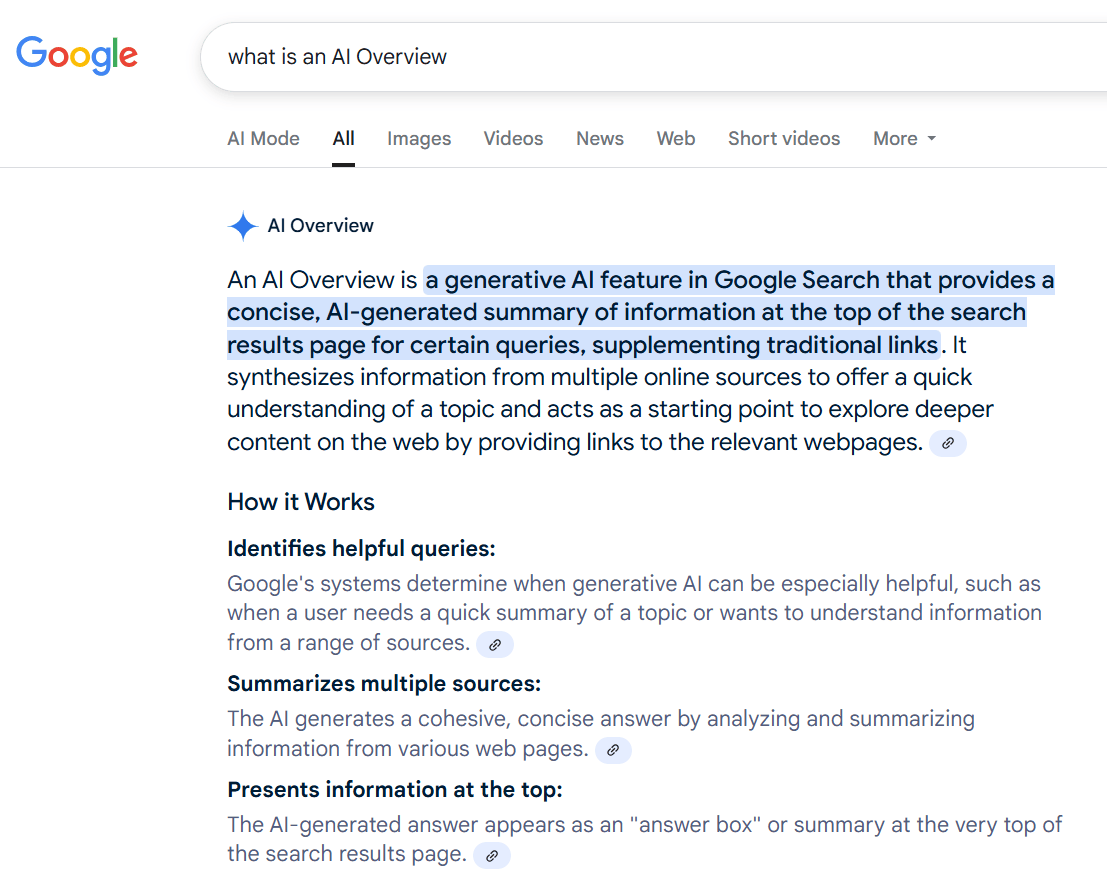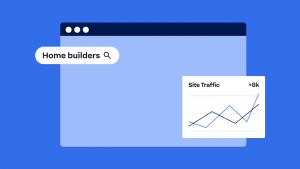Key takeaways:
- To improve your site’s SEO, you can update your existing content, keep up with new keywords in your industry, and align your content with how AI Overviews and other LLMs provide information.
- Optimize your images for quicker load times and add alt texts to help search engine crawlers understand what your images are about.
- Create quality content and earn backlinks from established websites to boost your website’s authority and enhance its search engine rankings.
You’re done laying the groundwork for your Search Engine Optimization (SEO) efforts. Now what? As internet searches continue evolving, a small business owner like you will want to go beyond the basic SEO tools.
If you’re here for that, this article will show you how to increase your website’s SEO by discussing strategies that bring you impactful results.
But, if you’re new to SEO, we recommend checking out our simple guide on optimizing your site for organic search first before circling back to this article.
How to increase your website’s SEO
Being proactive with improving your SEO strategies is the fastest way to help your business succeed. Here are actionable tips you can use to take your SEO efforts to the next level:
- Tip 1. Audit and refresh your existing content
- Tip 2. Keep up with and target new keywords before the competition catches up
- Tip 3. Align your content with AI Overviews and Large Language Model (LLM) results
- Tip 4. Optimize images for search engines
- Tip 5. Build quality backlinks
- Tip 6. Create in-depth, authoritative content
Tip 1. Audit and refresh your existing content
A content audit helps you identify multiple pages that aren’t performing well or need updating. Start by using Google Search Console to gain insights into how people find your site.
You can analyze search queries to see which terms people are using to discover your pages.
If a page gets impressions but has a low click-through rate, you can update it to better match what people are searching for. This is also a great way to discover new keywords you can target.

Note: The numbers presented are fictional and for illustration purposes only.
One other valuable tip is to look for broken links on your website. As the sites you link to change over time, those links might no longer lead to a live page. You can use a free SEO software like Screaming Frog’s SEO Spider to scan your website content and find these broken connections.
Once you identify them, you can either remove the links or replace them with new, updated links to reputable sites. This keeps your site healthy and user-friendly, which helps your site’s SEO over time.
Tip 2. Keep up with and target new keywords before the competition catches up
When a new product, service, or topic emerges within an industry, it introduces a fresh set of keywords that people use to find information. These new search terms often have low competition, which provides an opportunity to rank high in search results before competitors catch on.
This proactive approach helps you get ahead and maintain a competitive advantage in your niche.
Tap into a variety of reliable resources to find these valuable new keywords. Start with tools like Google Trends to see what’s gaining traction in real time.
You can also try a specialized keyword research tool like Ahrefs to get more detailed data on search volume and competition.
Beyond these platforms, explore what your target audience is talking about on forums or social media platforms, like:
- Quora
- X (formerly Twitter)
These communities are excellent for finding questions and phrases people are using naturally.
Pro tip: Incorporate keywords in your meta title and meta description to enhance your keyword rankings. Also, be sure to write good meta descriptions, as these can directly influence whether a person clicks on your link. Be as descriptive as possible, but make sure your descriptions are concise.

Tip 3. Align your content with AI Overviews and Large Language Model (LLM) results

The way people find information on the internet is changing, and AI is a huge influence on this shift. Search engines are going beyond simply providing a list of links. They’re now offering a combination of answers or summaries pulled from multiple sources.
This change in search results requires website owners to use a new method called Generative Engine Optimization (GEO) to get found online.
With this strategy, your main objective is to be a primary source for the AI Overviews and other LLM results that appear at the top of a search engine results page.
To perform GEO on your website content, use clear headings and subheadings to break down your articles logically. It also helps to leverage bullet points and numbered lists to make your content scannable.
These formats make it simple for AI models to identify key takeaways and construct a direct and concise response from your content.
Beyond structure, consider writing in a conversational tone. AI models are trained in natural language, and content that reads like a helpful, human-written response has a better chance of being included in their results.
Pro tip: Begin your sections with a direct and simple answer to a question, as AI models prefer to feature content that enhances user experience. For more strategies, check out our article about optimizing your website for AI search.
Tip 4. Optimize images for search engines
Adding images to your website is a great way to engage your visitors. And knowing how to maximize these visual elements can help you gain great results.
Optimizing your website images for search engines includes the following steps:
- Compress images
- Add alt texts to images
- Use browser caching
Compress images
Although it’s not a direct ranking factor, search engines prioritize fast loading speed to provide satisfactory user experience.
One of the many ways you can achieve fast load times is to compress your images. Use image compression tools to reduce file sizes without compromising quality.
Add alt texts to images
Image alt texts are short descriptions of images that help screen readers for visually impaired users understand your content. It also helps search engine crawlers understand what the image is about and can help your pictures show up in image searches.
Use browser caching
With browser caching, copies of files, like images, are saved on a visitor’s computer after their first visit. The next time they visit your site, the page loads faster because their browser doesn’t have to re-download the same image files.
Tip 5. Build quality backlinks
Backlinks are links from reputable websites that send visitors to your page. These boost your site ranking, as search engines confirm your credibility based on these links.
If you want a more strategic approach than simply asking for links, you can try earning them naturally.
Consider broken link building, wherein you find broken links on other people’s websites and suggest that they replace them with links to relevant pages on your site. This gives them a quick and easy solution while getting you a backlink.
You can also look for opportunities to write a guest blog post on established sites in your niche. Guest blogging is a great way to introduce your business to a new audience and get a backlink in the process.
Another way to earn links is by creating content that people naturally want to share. This can be:
- A detailed guide
- A helpful infographic
- An interesting case study
When your content provides a lot of value, other websites are more likely to link to it as a helpful resource for their own audience.
Tip 6. Create in-depth, authoritative content
Make content that positions you as a trusted expert in your field. How do you do that? Provide genuine value to your audience. This starts with understanding users’ search intent.
For example, a person searching for “how to clean a pool” has a different intent than someone searching for “best pool services.” Tailoring your content to match user intent leads to a better user experience and higher search engine rankings.
Beyond that, consider the following:
- Conduct your own original research on relevant topics
- Perform a study on a specific industry trend
- Interview experts in your field
- Share case studies that highlight your own experiences
These kinds of content are not found anywhere else. These will give your audience a reason to come to your website and help you build a reputation as a trusted authority.
Improve your website’s SEO rankings and reach your business’ full potential
Shifting your focus to more effective SEO strategies is a smart move for your business. It’s an asset to further your knowledge in optimizing your site for organic search. Be consistent with these approaches to gain valuable website traffic and enhance your search engine visibility.
As you begin improving your SEO efforts, get our professional SEO services for expert guidance. Our in-house SEO specialists can help you improve your discoverability, increase your authority, and more. Let us help your business grow, as we’ve done for thousands of others.
Frequently asked questions
To boost your website’s SEO and enhance your search engine rankings, start by auditing your existing content to find opportunities for improvement. Then, optimize images by compressing them for faster load times and writing alt texts.
You can also build a clear site structure to make sure it’s easy for search engines and visitors to navigate relevant pages on your site.
The three Cs of SEO are content, code, and credibility. “Content” means having high-quality, relevant information on your website that directly addresses what your users are looking for.
Meanwhile, “code” refers to the technical aspects of your website. It includes having a fast-loading and mobile-friendly site.
Lastly, “credibility” is a measure of your website’s authority and trustworthiness. You build credibility by getting backlinks from other reputable sites in your industry.
On-Page SEO involves strategies you apply directly on your website to help it rank. This includes creating good website content, using keywords, and optimizing title tags, headings, and images.
Off-Page SEO, on the other hand, refers to actions you take outside your website to improve its reputation and authority. This includes building high-quality backlinks and promoting your content on social media.
Check out our article comparing On-Page SEO and Off-Page SEO if you want to learn more about these approaches.
SERP features are results on a search engine results page apart from the traditional blue links. They’re designed to give users more direct answers or a richer experience, and they often appear at the top of the search results. Examples of SERP features include:
Featured snippets
Knowledge panels
“People Also Ask” sections
Rich snippets
Image packs
Video carousels
Paid search results




